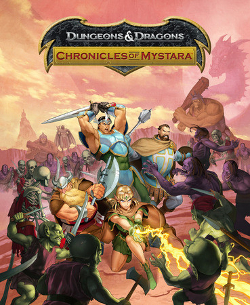 PLATFORM: XBLA (Reviewed), PSN, PC, Wii U eShop
PLATFORM: XBLA (Reviewed), PSN, PC, Wii U eShop
PRICE: $14.99
ESRB RATING:T
DEVELOPER: Capcom (Original) Iron Galaxy Studios (Collection)
PUBLISHER: Capcom
The beat-em-up, much like the shmup or the fighting game, is one of those genres that I’ve always wanted to like more than I actually do. Yet while my apathy towards the latter typically boils down to skills and my related inability to pay bills, my problem with brawlers tends to be that outside of a communal setting they’re…kind of boring. Between the simple gameplay (punch, walk, eat turkeys) and their grinding quarter-gobbling nature, it always feels like I’m mashing buttons and hoping for the best. That’s not to say their isn’t skill involved, because if there wasn’t Joe Internet wouldn’t be able to beat X-Men on a quarter will I have to invest a significant chunk of my paycheck. It’s just not a skillset that interests me, especially in the face of more complex modern action titles. For me it’s a case where the genre, rather than the game itself, feels dated. Mortal Kombat and Mortal Kombat (see why that’s confusing developers?) share a certain base level of appeal that makes it easier to revisit the original, but put Golden Axe up against something like God of War, and the comparison becomes much less favorable, unless it’s a box art competition in which case game, set, match baby:
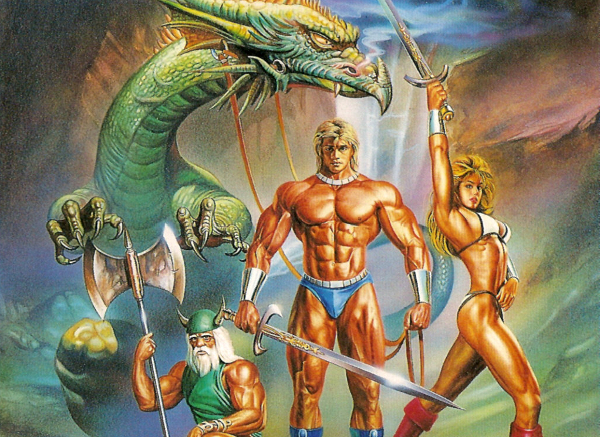
My aim however isn’t to slag-off brawlers, but to put things in context when I say that Dungeons & Dragons: Chronicles of Mystara is the first beat-em-up I’ve encountered where I actually enjoyed playing for extended periods by myself. In fact, not to unleash the hyperbole too early, but Chronicles may have wrested Castle Crashers from its spot as my favorite beat-em-up ever. I say may have because even though they both fall within the same genre, their strengths are almost entirely opposite to one another. One of the draws of a brawler is the spectacle and in that arena Castle Crasher’s delivers in spades. It’s as refined and mechanically competent as any of its traditional compatriots, but it’s the gorgeous art style that’s the main selling point. Chronicles isn’t exactly a slouch in this department (more on that later), but where Castle Crashers is a solid traditional game wrapped in a fancy exterior, Chronicles is a standard looking brawler hiding a far more robust set of mechanics.
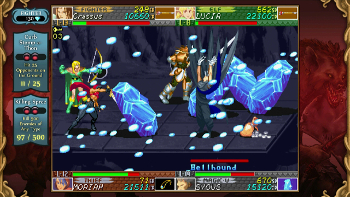 Chronicles of Mystara is actually a package consisting of two games, Tower of Doom and Shadow over Mystara, released in 1993 and 1996 respectively. What set these games from their contemporaries was the fact that both incorporated elements from the RPG and fighting game genres. From RPGs came armor and items that can be equipped, leveling that improves HP and provides new skills and a variety of disposable weapons and spells collected from the environment or purchased from shops between levels. It’s no Diablo, and none of it carries over between playthroughs (for obvious reasons), but it lends a welcome sense of progression and permanence to the standard “punch, punch, punch” progression. The fighting game influence shines through in the form of special attacks performed via the standard quarter-circle, up-down type control scheme. Again, you’re not going to confuse this for something like Street Fighter, but the deeper combat system made it feel like I had more control over my character’s success.
Chronicles of Mystara is actually a package consisting of two games, Tower of Doom and Shadow over Mystara, released in 1993 and 1996 respectively. What set these games from their contemporaries was the fact that both incorporated elements from the RPG and fighting game genres. From RPGs came armor and items that can be equipped, leveling that improves HP and provides new skills and a variety of disposable weapons and spells collected from the environment or purchased from shops between levels. It’s no Diablo, and none of it carries over between playthroughs (for obvious reasons), but it lends a welcome sense of progression and permanence to the standard “punch, punch, punch” progression. The fighting game influence shines through in the form of special attacks performed via the standard quarter-circle, up-down type control scheme. Again, you’re not going to confuse this for something like Street Fighter, but the deeper combat system made it feel like I had more control over my character’s success.
Of course that’s not to say the two games can’t still be crushingly difficult. These are arcade ports after all, and even on the 2nd lowest difficulty setting I still ended up dropping about $10 worth of continues on my first playthrough. Yet the punishment felt more fair than arbitrary, and as I mastered the various dodges and attacks I began to see a noticeable improvement in my longevity. Differing equipment and abilities also mean that rather than feeling like a generic set of palette swaps, the various characters feel distinct from each other, especially in Mystara. Indeed while Tower is perfectly serviceable, Mystara is the game where a lot of these concepts really begin to shine. In addition to adding the Thief and the Magic User to the original game’s line-up of Elf, Cleric, Fighter and Dwarf, Mystara introduces a far more complex combo system for each character, as well as a secondary sprite (in some cases with minor skill changes) which allows two players to select the same class. Having not played Mystara back in the arcades, I was actually a little shocked at just how advanced it felt compared to other brawlers. Set aside the dated presentation, and I could easily see this as a modern-day XBLA or PSN downloadable title.
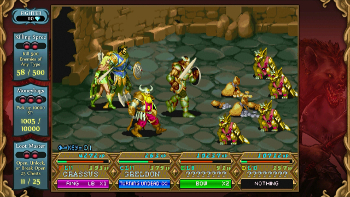 I also liked the numerous small touches the game includes to create a more fully realized world. The small text descriptors before levels make it feel like you’re actually playing a D&D campaign, and I liked that not only does the game include branching paths, but it works them into the story. Do I take the short but treacherous forest route, or the longer but safer sea voyage? Press on through the caves to reach the evil sorceress’ castle, or detour to save the gnome village? In addition the later dungeons appropriately enough include various side-rooms to explore. Then there’s the really small stuff, like the fact that firebombs won’t work in water, or that certain enemies react differently to different types of attacks based on their nature (the troll boss for instance has to be finished off with fire). None of these aspects are particularly revolutionary, but it all combines to give the feel of a cohesive narrative rather than just the usual collection of random levels.
I also liked the numerous small touches the game includes to create a more fully realized world. The small text descriptors before levels make it feel like you’re actually playing a D&D campaign, and I liked that not only does the game include branching paths, but it works them into the story. Do I take the short but treacherous forest route, or the longer but safer sea voyage? Press on through the caves to reach the evil sorceress’ castle, or detour to save the gnome village? In addition the later dungeons appropriately enough include various side-rooms to explore. Then there’s the really small stuff, like the fact that firebombs won’t work in water, or that certain enemies react differently to different types of attacks based on their nature (the troll boss for instance has to be finished off with fire). None of these aspects are particularly revolutionary, but it all combines to give the feel of a cohesive narrative rather than just the usual collection of random levels.
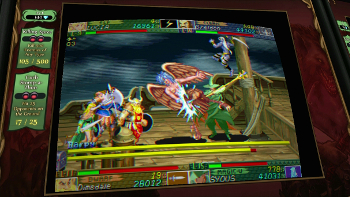 Really the only thing I can hold against Chronicles is its presentation, which I realize is going to rub some people the wrong way. I will say that for a game from 1996 it looks pretty good, and most of the time the graphics are charmingly retro. The game also includes a handful of features to tweak the visuals to your liking (fullscreen/widescreen/arcade cabinet views, soft/crisp filters) but most of them seem designed to make the game look more authentic (i.e. crappy) rather than modern. The nice thing about sprite-based graphics is that in general they tend to age more gracefully than their polygon counterparts. The downside is that there isn’t an easy way to HDify a sprite-based game without going back and creating new artwork. While that approach can definitely lead to mixed results (see: Turtles in Time), it would have been nice if we could have gotten something along the lines of the recent Monkey Island re-releases, which allowed you to toggle between new high-res art and the original graphics.
Really the only thing I can hold against Chronicles is its presentation, which I realize is going to rub some people the wrong way. I will say that for a game from 1996 it looks pretty good, and most of the time the graphics are charmingly retro. The game also includes a handful of features to tweak the visuals to your liking (fullscreen/widescreen/arcade cabinet views, soft/crisp filters) but most of them seem designed to make the game look more authentic (i.e. crappy) rather than modern. The nice thing about sprite-based graphics is that in general they tend to age more gracefully than their polygon counterparts. The downside is that there isn’t an easy way to HDify a sprite-based game without going back and creating new artwork. While that approach can definitely lead to mixed results (see: Turtles in Time), it would have been nice if we could have gotten something along the lines of the recent Monkey Island re-releases, which allowed you to toggle between new high-res art and the original graphics.
In this case Capcom apparently decided it wasn’t worth the time or effort, but at the end of the day Chronicles is asking for the same $15 as any other modern downloadable title, and for the non-forgiving (or nostalgic) out there I can see the dated look being a problem. To its credit the collection does add some new features, including online multiplayer, a challenge system, some gameplay modifiers (unbreakable weapons for instance) and a gallery of unlockable art and promotional materials. However from a look and feel perspective what you get here is basically what you would have played in arcades during the 90s. On the plus side though, the dwarf’s sprite does make it look like he’s wearing shades, which is pretty boss. Oh, and most of the game’s voicework sounds like someone locked in a distant closet shouting gibberish, but personally I thought that was a hilarious value add. Ultimately Chronicles of Mystara is a no-brainer recommendation for brawler fans, and I’d say even the doubtful should definitely give the demo a try. It’s a lost classic that made a believer out of me, and it should be required playing for anyone looking to develop a beat-em-up moving forward.
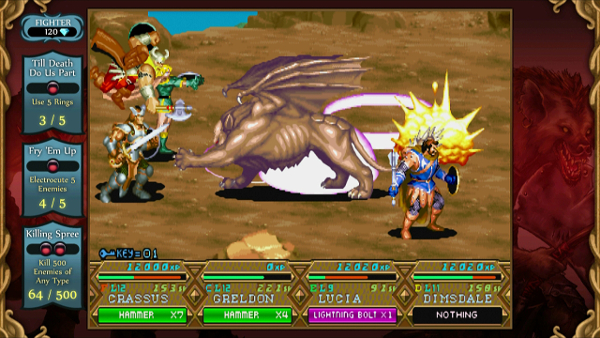





Out of 5
Follow me on Twitter
